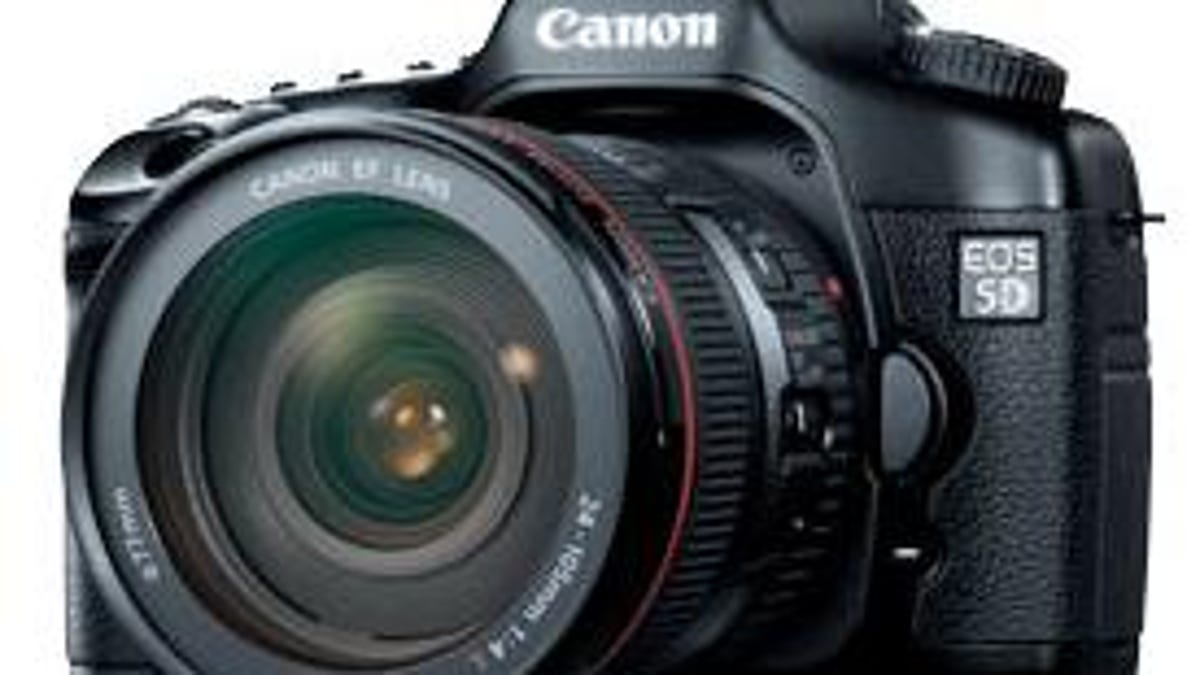Are new Canon SLRs coming in January?
A Swedish Canon executive says announcements are planned for January. My guesses include sequels to two SLRs, the Rebel XTi and 5D.

A Swedish Web site, Kamera and Bild, has quoted Canon Sweden executive Robert Westin as saying the camera maker plans to launch new products on January 24, a week before the Photo Marketing Association trade show begins. That prediction is about as hard to make as figuring out if General Motors will share news at the Detroit auto show, but it does give us an excuse to venture our suspicions.
My bet (and I'm not alone) is that we'll hear about successors to the entry-level EOS Digital Rebel XTi and the full-frame EOS 5D. They're the most elderly products in Canon's SLR line, but let me offer some other data, too.
Timing is one indicator. Canon has updated its entry-level SLR line roughly once every year and a half. Canon announced in August 2006 the 10.1-megapixel Rebel XTi, the third generation of Canon's entry-level digital SLR line; the the 8.2-megapixel Digital Rebel XT was in February 2005, and the 6.3-megapixel Digital Rebel announcement was in August 2002.
Marketing gives another clue. For the holiday season, I've been seeing a lot of price cuts on Rebel XTi deals--"new low price!"--and the Rebel XT isn't heavily promoted as a less expensive alternative, indicating that Canon might be combining the usual holiday shopping incentives with some XTi inventory clearance.
Competitiveness is another. Nikon, Canon's top rival, is doing well with its entry-level D40 and D40x, analysts have said, and Canon could use a better response. The dynamics of the SLR market, with its interchangeable lenses, means there's an extra value to winning over a first-time SLR buyer: Today's entry-level customer might buy compatible lenses from the same company later, and once somebody has lenses there's a strong incentive to stick with the same company again when buying the next SLR body.
My CNET Reviews colleague Lori Grunin goes so far as to predict specifications: a 10-megapixel sensor, 3-inch LCD, top sensitivity of ISO 1,600, the Digic III image processor, a shooting speed of 4 or 5 frames per second, and a price of $799 including the new image-stabilized 18-55mm EF-S lens. The image-stabilized lens is a better response to Sony, Pentax, Panasonic, and Olymps, all of whom build sensor-shift stabilization into their SLRs, though not necessarily the low-end models, and SLRgear says the lens' updated optics shows "remarkable improvement" over its predecessor.
The 5D is in a more rarified segment of the market where the image sensor is the same size as a full frame of 35mm film; entry-level Canon cameras and most products from competitors use smaller and less expensive sensors. Until Nikon began selling its $5,000 D3 in recent weeks, nobody else had a full-frame SLR on the market.
When Canon announced the 5D in August 2005, it had an initial price of about $3,300, but that's now dropped to about $2,100 today. A lot of people sensibly expect a second generation to join the family soon, and with possible follow-ups that have bubbled up including the 5D Mark II and the 7D.
The 5D was lauded for its high image quality, but there's definitely room for improvement in a category that appeals to enthusiasts and professionals looking for a starter or backup camera. As with the Rebel XTi, the 5D uses the older Digic II image processor, but newer Canon SLRs--the 1D Mark III, 1Ds Mark III, and 40D--use the faster Digic III. And the 5D could benefit from attention to sturdiness ruggedness; the $1,300 40D was the first in that family to get some protection from weather and dust, and the 5D category would benefit from that, too. Noise reduction also has advanced considerably since the introduction of the 5D. Finally, I'd expect the 5D sequel to get sensor-shaking technology to knock off the pesky dust flecks that stick to the sensor is de rigueur these days for any new SLR.
Grunin thinks Canon will hold off until the higher-brow Photokina show in the fall to announce the 5D successor. On the other hand, another SLR honcho from CNET Reviews, Phil Ryan, suggests both the 5D Mark II and 7D names could be correct: "They could make a 5D Mark II and a 7D. In that case, the 7D would probably be the lower-end of the two, per Canon's typical naming conventions."
No doubt Canon has other announcements planned, too. It's the top seller of compact cameras, and at the high end, Canon has announced in October it's developing two high-end telephoto lenses, a 200mm f/2.0 and a mammoth 800mm F/5.6.
(Via Slashgear.)

